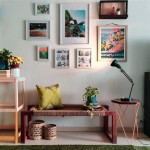How To Decorate A Living Room With Red Carpets Ideas
Red carpets, traditionally associated with luxury and grandeur, can present a unique challenge and opportunity when incorporated into living room décor. The bold and assertive nature of the color requires careful consideration of surrounding elements to create a balanced and visually appealing space. Successfully integrating a red carpet involves understanding color palettes, furniture styles, and accessory choices that complement and enhance the carpet's inherent character.
The presence of a red carpet immediately establishes a focal point in the room. Other design elements should then serve to either accentuate or soften this focal point, depending on the desired aesthetic. This approach demands a thoughtful strategy that assesses the existing architectural features of the room, the natural lighting it receives, and the intended purpose of the living space.
Understanding the Undertones of Red
Red is not a monolithic color; it encompasses a wide spectrum of shades, each with its own distinct undertones. Understanding these undertones is crucial for selecting complementary colors and avoiding clashes. Some reds lean towards warmer tones, possessing hints of orange or yellow. These shades tend to evoke feelings of energy and excitement. Conversely, cooler reds have bluish or purplish undertones, often associated with sophistication and elegance. Consider the specific shade of your red carpet and its inherent warmth or coolness when choosing wall colors, furniture upholstery, and accent pieces.
For instance, a ruby red carpet with blue undertones pairs well with cool grays, silvers, and whites. These colors create a sophisticated and timeless look. In contrast, a terracotta red carpet with orange undertones benefits from warmer neutrals like creams, beiges, and browns. These earth tones enhance the carpet's warmth and create a cozy, inviting atmosphere.
Furthermore, the intensity of the red must be considered. A deep, saturated red can be overwhelming in a small space, while a muted or faded red may appear washed out in a large, brightly lit room. Adjust the shade of red to suit the specific dimensions and lighting conditions of your living room.
Selecting a Complementary Color Palette
The color palette surrounding a red carpet plays a pivotal role in determining the overall ambiance of the living room. While red can be a dominant color, it needs to be balanced by other shades to prevent visual fatigue and create a harmonious environment. Neutral colors are often the safest and most versatile choice, providing a backdrop that allows the red carpet to stand out without being overwhelming. However, carefully chosen complementary colors can also be used to create a more dynamic and visually interesting space.
Gray, in its various shades, is an excellent neutral option. Light grays create a modern and sophisticated look, while darker grays add depth and drama. White walls provide a clean and crisp contrast to the red carpet, making the room feel brighter and more spacious. Beige and cream offer a warmer alternative to stark white, creating a more inviting and comfortable atmosphere. Consider using variations in texture within the neutral palette to add visual interest. For example, a textured gray wallpaper or a linen sofa can complement a smooth red carpet.
If you wish to incorporate color beyond neutrals, consider using complementary hues. Green is directly opposite red on the color wheel, creating a striking and vibrant contrast. However, using pure green and red in equal measure can be overwhelming. Instead, opt for muted greens like olive or sage, or use green sparingly as an accent color in pillows, artwork, or plants. Blues, particularly navy or teal, can also complement red, creating a sophisticated and elegant look. Again, moderation is key; use blue as an accent color or in smaller doses to avoid overpowering the red carpet.
Avoid using colors that clash with red, such as bright orange or yellow, unless you are intentionally aiming for a bold and eclectic aesthetic. These colors can compete with the red carpet, creating a visually jarring effect.
Choosing Furniture Styles and Placement
The style and placement of furniture within a living room with a red carpet should be carefully considered to enhance the overall aesthetic. The furniture should not only complement the carpet's color but also contribute to the room's functionality and flow. The choice of furniture styles should align with the desired ambiance, whether it be formal, modern, or eclectic.
For a more formal setting, opt for classic furniture styles with clean lines and elegant details. Sofas and armchairs upholstered in luxurious fabrics like velvet or silk can complement the richness of the red carpet. Dark wood furniture with intricate carvings can add a touch of sophistication. Consider using furniture with metal accents, such as brass or gold, to enhance the sense of luxury.
In a modern living room, choose furniture with minimalist designs and streamlined silhouettes. Leather sofas in neutral colors, such as gray or black, can provide a sleek and contemporary contrast to the red carpet. Glass coffee tables and metal side tables can further enhance the modern aesthetic. Avoid overly ornate or decorative furniture, as it can clash with the carpet's boldness.
For an eclectic look, mix and match furniture styles from different eras and cultures. An antique wooden chest can sit alongside a modern sofa, creating a unique and visually interesting space. Use a variety of textures and patterns to add depth and character to the room. However, exercise caution to avoid creating a cluttered or chaotic look. Ensure that there is a cohesive element that ties the different pieces together, such as a shared color palette or a similar design motif.
The placement of furniture is equally important. Avoid overcrowding the room with too much furniture, as this can make the space feel cramped and overwhelming. Arrange the furniture in a way that encourages conversation and facilitates movement. Consider creating a focal point by placing a large sofa or armchair across from the red carpet, drawing the eye towards the center of the room. Use area rugs to define different zones within the living room and to create a sense of cohesion.
When placing furniture directly on the red carpet, consider using furniture pads or coasters to protect the carpet from scratches and dents. Regularly vacuum the carpet to remove dirt and debris and prevent it from becoming matted.
Accessorizing with Intention: Lighting, Art, and Textiles
Accessories play a vital role in completing the look of a living room with a red carpet. The right accessories can enhance the carpet's beauty and create a cohesive and inviting space. Lighting, artwork, and textiles are all essential elements to consider when accessorizing. The selection of accessories should be deliberate and intentional, contributing to the overall aesthetic of the room.
Lighting is crucial for setting the mood and highlighting the red carpet. Natural light is always preferred, but artificial lighting is essential for evening and nighttime use. Layering different types of lighting, such as ambient, task, and accent lighting, can create a dynamic and visually appealing space. Floor lamps and table lamps can provide ambient lighting, while spotlights and track lighting can be used to highlight artwork or architectural features. Consider using lamps with dimmer switches to adjust the lighting intensity according to the time of day and the desired ambiance.
Artwork can add personality and character to the living room. Choose artwork that complements the red carpet's color palette and style. Abstract paintings with bold colors can create a modern and dynamic look, while landscape paintings with muted tones can add a touch of tranquility. Consider using frames that complement the artwork and the overall aesthetic of the room. Metallic frames can add a touch of glamour, while wooden frames can create a more rustic and natural feel. Ensure that the artwork is properly lit to enhance its visual impact.
Textiles, such as throw pillows, blankets, and curtains, can add texture and warmth to the living room. Choose textiles that complement the red carpet's color palette and style. Velvet pillows in jewel tones can add a touch of luxury, while linen pillows in neutral colors can create a more relaxed and casual feel. Consider using curtains with a subtle pattern to add visual interest without overwhelming the room. Use rugs to define different zones within the living room and to create a sense of cohesion. Ensure that the textiles are made from high-quality materials that are both durable and comfortable.
Plants can also add life and vibrancy to the living room. Choose plants that thrive in the room's lighting conditions and that complement the red carpet's color palette. Green plants can add a touch of freshness and nature, while flowering plants can add a pop of color. Consider using decorative pots to enhance the plants' visual appeal.
When accessorizing, avoid cluttering the room with too many objects. Choose a few key pieces that will make a statement and enhance the overall aesthetic. Remember that less is often more.

Incorporating Red Into Your Interior Decor Cyrus Rugs

18 Vibrant Red Living Room Decor Ideas Rugs Direct

Red Carpet Living Room Designs 50 Rooms With Flooring Photos This Eous Livin Decor Black

18 Vibrant Red Living Room Decor Ideas Rugs Direct

18 Vibrant Red Living Room Decor Ideas Rugs Direct

10 Burning Hot Red Living Room Design Ideas Cafe

Deciding To Decorate A Retro Living Room Isn T The Easiest You Re Decorating With Trends And Design R Red Carpet Green
:strip_icc()/101166460-ba33369db29f4d278b17f8420cbebaf7.jpg?strip=all)
13 Outstanding Red Living Room Ideas

18 Vibrant Red Living Room Decor Ideas Rugs Direct

A Rainbow Of Designer Carpet Ideas For Your Floors Fresh Design Blog
Related Posts







